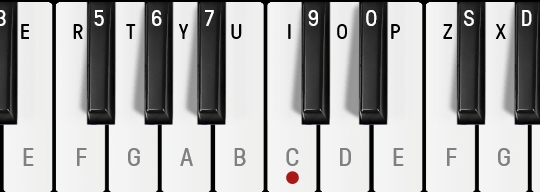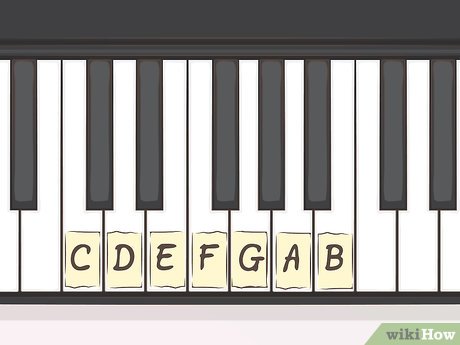Inversions change the whole character of a chord, and they're pretty common on guitar!
View the full lesson at Chord Inversions & Jumbled Triads | JustinGuitar
Inversions change the whole character of a chord, and they're pretty common on guitar!
View the full lesson at Chord Inversions & Jumbled Triads | JustinGuitar
I feel like putting the notes in alphabetical order first helps. Then you just need to figure out which one of the 3 are the root, which is easy since you just have find which letters have a distance of more than 2. It feels a lot more mechanical to sort them first though.
@apropostt there’s some logic to what you say. 
When you describe the counting as a ‘distance of more than 2’, try to learn and use a little theory and the naming conventions around intervals, thirds etc.
Cheers 
| Richard_close2u | JustinGuitar Official Guide & Moderator
Fair… honestly I wrote this before I sat down to do the exercise. Once I sat down and actually looked at the notes it was much more straight forward than I was originally thinking. Just find the notes that couldn’t be/aren’t a third apart from each other. That part wasn’t hard.
Identifying if it was minor/major/dim/aug honestly took me a bit longer than I expected; key signatures are still pretty rusty for me and most of the key signatures I have memorized are flats (F, Bb, Eb, Ab… etc).
Hi, I am a little confused here. Can someone help me.
Reading the Chord inversion example seems that whenever I need to do a first inversion I should move the 3rd note to the first position of the chord (bass), then the 5th to the second position and finally, the root in the last position of the chord.
Cmaj → C E G 1st Inversion → E G C
Then, for a 2nd inversion, I should move the 5th to the first position, the root to the second position and in the las position I should put the 3rd note.
Cmaj → C E G 2nd Inversion → G C E
However, doing the exercises, I came to this inversions
But it seems that in order to obtain a 1st inversion what I need to do is to swap between the root note and the 3rd note, and to perform a 2nd inversion I need to do is to swap between the root note and the 5th note.
Root Chord - 1 3 5 - C E G
1st Inversion - 3 5 1 - E G C
2nd Inversion - 5 1 3 - G C E
Here are some C major triads on the fretboard. I’m not showing all of them.
As they look in standard notation.

Yep, exactly. Becausev the triads are built by stacking thirds together from the parent scale. When you loop them around on each other, you get different inversions, voicings for the triad. So Root position, first inversion, second inversion.
However, changing the intervallic structure of the triad will create problems. eg. ECG in your example.
Cheers, Shane
I’m not sure why ECG isn’t considered an inversion. My guess is that on a keyboard it’s not easily played. You have to go from E up a 6th to C then up a 5th to to G. That’s a long span on a keyboard. Possibly impractical.

E-C-G is a long span . It’s greater than an octave.

Easier to remember is this way and I hope I am not talking gibbrish here: think from root note perspective only. In normal way root note is the bass note so top string of strings played. 1st inversion root drops to bottom and 2nd goes to middle. The rest of the strings think like about a moving conveyor belt where notes follow in order then they drop down and back at the bottom of the belt with the rest of the notes following in the same order. Hope this makes sense and helps with the rest of excercises on triads and shaping any of them
Inverting a triad involves moving the bass note up an octave. Thats essentially all that happening.
Possibly veering a little of topic here but I suspect inversions are inherently linked to chord construction on a keyboard.
Here is a C major scale on a keyboard.

If I want to play every C major triad chord within this one octave then I will play.
C major CEG Root
D minor DFA Root
E minor EGB Root
F major CFA 2nd inversion
G major DGB 2nd inversion
A minor CEA 1st inversion
B dim DFB 1st inversion.
This would be much more efficient than shuffling a up a full octave worth of notes from C to B.
Yep, but you’re not actually shuffling a heap of notes up an octave. And an octave is not really a great distance on a guitar anyway. You’re just continuing the stacked 3rd structure of the triad. Its the way chords are built, and the way the fretboard is laid out. Highly efficient I reckon, and allows for a wide variety of ‘voices’ with the same chord, lateral and vertical movement, voice leading, huge tonal variety etc… Its part of what makes the guitar so versatile.
In the end the inversions are just triads.
Cheers, Shane
‘Yep, but you’re not actually shuffling a heap of notes up an octave.”
On a keyboard I see a difference. If I play Cmaj (root) then F major FAC (root) I have to shift my hand 3 keys to the right or 4 to left. If I play the F major as CFA ( 2nd inversion) then no hand shift is required. You’re right though. It’s never a full octave shift. I don’t play keyboard so I have no idea if it’s a significant difference in workload.
What I’m seeing now is that CEG (root), EGC (1st inv) and GCE (2nd inv) are the only ways to construct the chord without skipping a chord note. To play any other combination (CGE, ECG, GEC) would require a skip. So there is a little more to inversions than note combinations than I thought. The order notes of the scale is a factor.
Yep, its the defining factor. It all derives from the scale, with stacked thirds being the basic building blocks. This triad structure continues into bigger chords - 7,9,11,13 chords.
Cheers, Shane
I understand that chords are built by stacking thirds. However the inversion EGC is a third followed by a fourth. If you look at the chords drawn in standard notation you can see that CEG looks like stacked 3rds. EGC in standard notation does not look like stack thirds. From the point of view of the bass note E, EGC is 1-b3-b6.
@Matt125 you are over thinking this way to much. A chord containing the note E as the root and a b3 and b6 wouldn’t be a C major. If would be an Emb6 so no longer a chord inversion of a C major. Major Chord invertions are made up of a R 3 and 5 but not necessarily in that order. Minor chord invertions have a b3. That’s it no need to analyze any further.
Hello @acbardawil and welcome to the community.
The means by which you consider the root, the 3rd and the 5th to have moved to new positions - thus creating a root or first or second inversion triad - is something you will superimpose yourself.
You describe thinking of all notes moving relative to each other.
I tend to think of just one of the notes hopping across the other two to take up a new position at the opposite end of the sequence.
Root inversion = 1, 3, 5
1st inversion = 3, 5, 1 (I think of the 1 as have hopped from first place to last place).
2nd inversion = 5, 1, 3 (I now think of 3 having hopped over 5 and 1 in a similar way).
But that is me. Your way of visualising and grasping the concept is good and equally valid.
Your next query:
Taking just the C major example - and leaving you to explore the others you give.
There are different types of triads - closed voice and open voiced.
Those you have learned about in this lesson are closed voice.
Root inversion = 1, 3, 5
First inversion = 3, 5, 1
Second inversion = 5, 1, 3
Those chord tones, those notes, all sit within the same octave span. On the guitar you can play them all on immediately adjacent strings. Their ‘sequence’ does not change even if the ordinal position does.
Open voiced triads takes the basic concept of a triad consisting of three notes which are found at intervals of thirds and allowing for them to not only be rearranged in different sequences but - of necessity - having them spill over a span of more than a single octave.
I have drawn up four diagrams to illustrate this.
Diagrams 1, 2 and 3 show the closed voice root, first and second inversions triads for C major. The notes all sit close together and exist within an octave span.
Diagram 4 shows the open voiced triad you discovered for C major in which the sequence has shifted. E precedes C which precedes G. This is only possible by having the notes span across more than an octave.
One more point. You may encounter the concept of spread triads. These, like closed voice triads, may maintain the same sequence of notes (either 1, 3, 5 or 3, 5, 1 or 5, 1, 3) but allow for them to span more than one octave. Or they may reorder the sequence entirely (exampeles could be 1, 5, 3 or 3, 1, 5 etc). These are easily played on a keyboard. Finding finger positions on a guitar is not so obvious. They do involve playing notes on strings that are not adjacent - and possibly some finger stretches too. Here is one example (there are many theoretically possible combinations).
I hope that helps.
Cheers ![]()
| Richard_close2u | JustinGuitar Official Guide, Approved Teacher & Moderator
It is not an inversion because it does not follow the sequence of stacked thirds that form the triad counting from the root.
It is still a triad but classified as an open voiced triad.
The specific notes (call them scale degrees if it helps) are derived from the root major scale by stacking thirds. Having arrived at those three notes, any rearrangement by changing the sequence will seem to be shifting their intervals. And, laid out on a linear scale or around a note circle, it does. Your interval descriptors in the quoted text are correct. But the three scale degrees, when derived from the C major scale, spell a C major triad. Nothing else.
If those exact same three notes were being analysed from the framework of a different major scale (a different key signature if you will), that would be a wholly different story.
For example, those notes can all be found in the key of G.
G, A, B, C, D, E, F#.
In the key of G that would be an E minor b6 (no 5th).
That is a bit of a rabbit hole leading to nowhere really.
So come back up and think only of one key signature at a time from which you analyse its triads which are all built on stacked thirds.